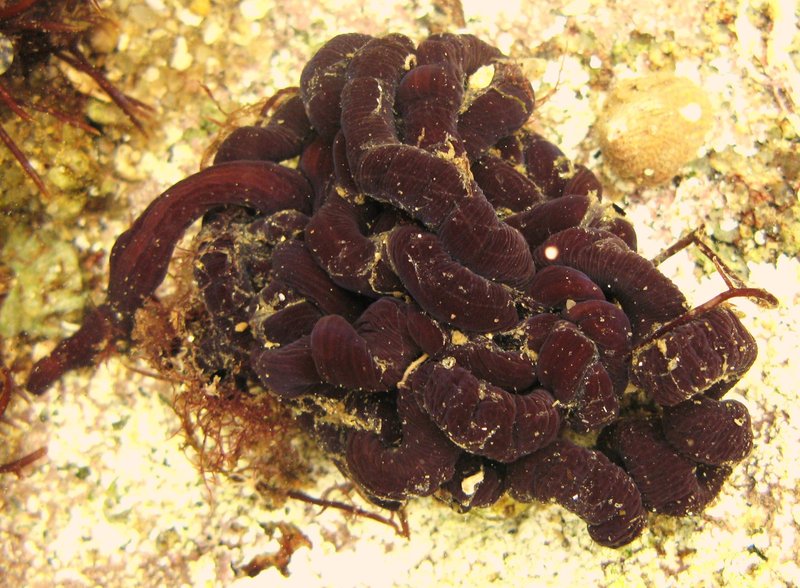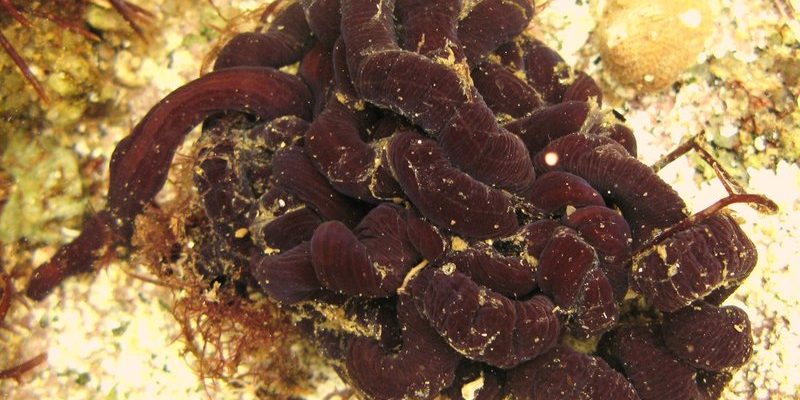
Living mainly in marine environments, these worms can be found in oceans around the world, often hiding in the sediment or among rocks. Now, let me explain what makes bootlace worms so interesting, as well as why they deserve a spot on your list of nature’s wonders.
What Are Bootlace Worms? An Overview
Bootlace worms, or **Lineus longissimus**, are part of the phylum Nemertea, which consists of ribbon-like worms that can be incredibly long and thin. They’re renowned for their astonishing flexibility and the ability to stretch and contract, which helps them navigate their environment. If you’ve ever seen a long piece of ribbon gently swaying in the wind, you can get an idea of how these worms move through water and substrate.
These worms are often mistaken for other long marine animals, such as eels or snakes. However, they differ drastically in anatomy. While eels and snakes have a spine, bootlace worms do not. Instead, they have a unique body structure that allows them to glide through their environments in search of prey, which typically consists of small invertebrates and even fish.
Where Do Bootlace Worms Live?
Bootlace worms tend to prefer coastal environments, often dwelling in shallow waters near shorelines. They can be spotted in various habitats, from muddy estuaries to rocky shorelines. If you were to sift through the sand or mud in these areas, you might accidentally disturb a bootlace worm as it burrows beneath the surface.
These creatures are particularly abundant in the northern parts of the Atlantic and Pacific Oceans. However, you might also find them in tropical waters, just hiding in plain sight. They blend well into their surroundings, so spotting one can be quite a challenge!
The Incredible Length of Bootlace Worms
One of the most striking features of bootlace worms is their length. As I mentioned earlier, they can reach impressive sizes—some individuals have been recorded at lengths of up to 30 meters! That’s more than two school buses lined up end to end.
But how do they manage to grow so long? The answer lies in a combination of their unique biology and their habitat. Bootlace worms have a remarkable ability to regenerate parts of their bodies, which not only helps them recover from injuries but also enables them to grow longer over time. They can lose segments and still thrive, which is a strong survival trait.
Interestingly, their elongated shape serves a purpose. The thinner they are, the easier it is for them to slip into crevices and ambush prey. This adaptation is key to their survival!
Feeding Habits of Bootlace Worms
You might be wondering, “What exactly do bootlace worms eat?” These fascinating creatures are carnivorous, primarily feeding on small invertebrates, including worms, crustaceans, and mollusks. They have an impressive hunting technique: bootlace worms possess a specialized structure called a proboscis. This long, tube-like appendage can extend quickly to capture prey.
When hunting, a bootlace worm will extend its proboscis and ensnare its target, much like a fishing line catching a fish. The proboscis often contains *sticky threads* that help immobilize the prey. This technique allows bootlace worms to stay stealthy while capturing a meal.
Reproduction and Lifespan
Bootlace worms typically reproduce through a process called **parthenogenesis**, where females can produce offspring without the need for fertilization from males. This method is quite fascinating as it allows populations to thrive even in sparse environments.
When it comes to lifespan, bootlace worms can live for several years, but their longevity can vary based on factors such as habitat, food availability, and predation. Proper conditions can support their growth and reproduction, while harsh environments may limit their survival.
Are Bootlace Worms Dangerous?
You may have heard rumors about bootlace worms being dangerous, but here’s the thing: while they can look quite intimidating with their length, they pose little threat to humans. Most bootlace worms are harmless and won’t attack unless provoked.
However, it’s worth noting that some species of nemerteans can deliver a painful sting if handled improperly. So, while they’re not out to get you, it’s wise to admire them from a distance! Just think of them as the gentle giants of the marine world, living peacefully in their underwater habitats.
Why Should We Care About Bootlace Worms?
Let’s wrap this up by thinking about why bootlace worms matter. These fascinating creatures play an essential role in their ecosystems, helping to maintain the balance of marine life. By consuming small invertebrates, they contribute to the food web and serve as indicators of environmental health.
In addition, studying them can teach us about marine biodiversity and how organisms adapt to their surroundings. With climate change and coastal development impacting marine environments, understanding species like bootlace worms is vital. They remind us of the importance of preserving our oceans and the incredible life they support.
In conclusion, bootlace worms are more than just a curious marine creature; they are a testament to the wonders of nature. The next time you think about marine life, remember these long, flexible invertebrates and the unique role they play in ocean ecosystems. Whether they are hiding beneath the sand or gliding gracefully through the water, bootlace worms are a captivating part of our planet’s diverse tapestry.

